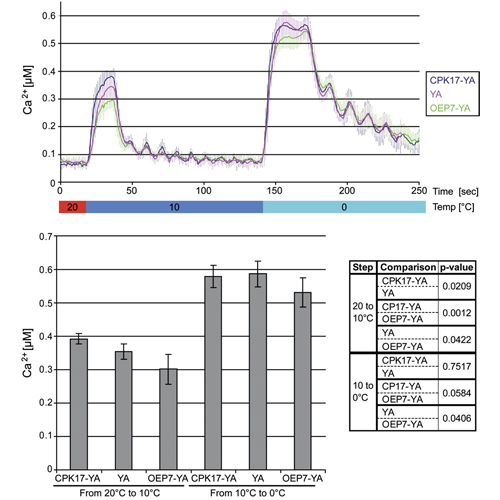A toolset of aequorin expression vectors for in planta studies of subcellular calcium concentrations in Arabidopsis thaliana
02-Jan-2012
Journal of Experimental Botany, 2012, doi: 10.1093/jxb/err406, 63 (4): 1751-1761 published on 02.01.2012
Journal of Experimental Botany, online article
Journal of Experimental Botany, online article
Calcium has long been acknowledged as one of the most important signalling components in plants. Many abiotic and biotic stimuli are transduced into a cellular response by temporal and spatial changes in cellular calcium concentration and the calcium-sensitive protein aequorin has been exploited as a genetically encoded calcium indicator for the measurement of calcium in planta. The objective of this work was to generate a compatible set of aequorin expression plasmids for the generation of transgenic plant lines to measure changes in calcium levels in different cellular subcompartments. Aequorin was fused to different targeting peptides or organellar proteins as a means to localize it to the cytosol, the nucleus, the plasma membrane, and the mitochondria. Furthermore, constructs were designed to localize aequorin in the stroma as well as the inner and outer surface of the chloroplast envelope membranes. The modular set-up of the plasmids also allows the easy replacement of targeting sequences to include other compartments. An additional YFP-fusion was included to verify the correct subcellular localization of all constructs by laser scanning confocal microscopy. For each construct, pBin19-based binary expression vectors driven by the 35S or UBI10 promoter were made for Agrobacterium-mediated transformation. Stable Arabidopsis lines were generated and initial tests of several lines confirmed their feasibility to measure calcium signals in vivo.











